
 |
|
|||||||
| Forum Rules | Firearms Safety | Firearms Photos | Links | Library | Lost Password | Email Changes |
| Register | FAQ | Calendar | Search | Today's Posts | Mark Forums Read |
 |
|
|
Thread Tools | Search this Thread |
|
|
#1 |
|
Member
Join Date: January 17, 2011
Location: Central Illinois
Posts: 79
|
Is it grime or patina, and other questions
I got this 1884 Trapdoor on saturday. Bore is very good. I'm wondering about cleaning it. I know you have to be careful but where is the line between dirt and patina. There is oily dirt in parts, and crud on the lock. In the close up of the lock you can see a small scratch I made with my thumb nail, about an 1/8" long. It came up very easily. The same thing with the stock. I have thought about one of those magic erasers or those Frontier 44 pads, not sure. I haven't started looking for BP loads yet but I have a notion to shoot this, So I will have to clean it any way. So I guess I'm looking for some sage advice, thankyou. Does anyone have an idea as to what the numbers on the stock mean? The other side says 22 Sep Co. Thanks guys.
[IMG] 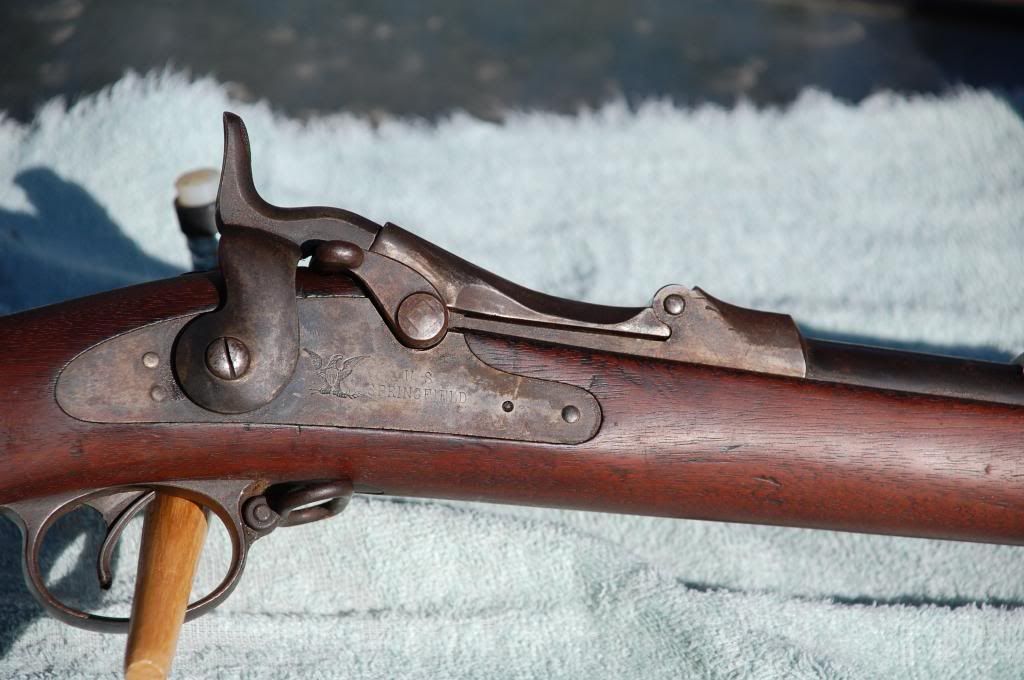 [IMG] 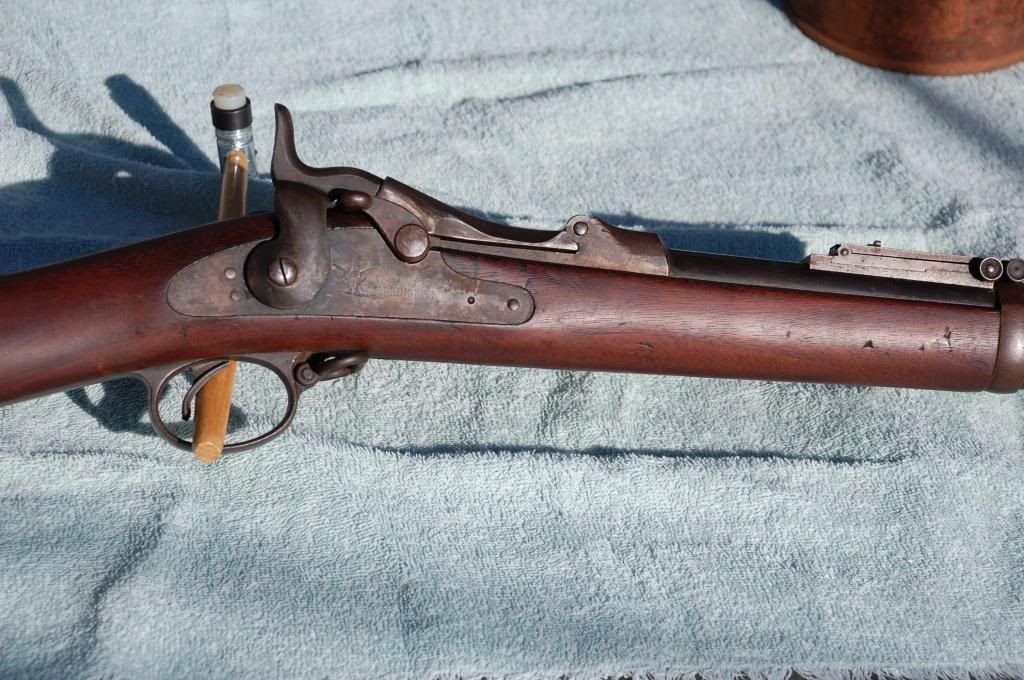 [IMG] 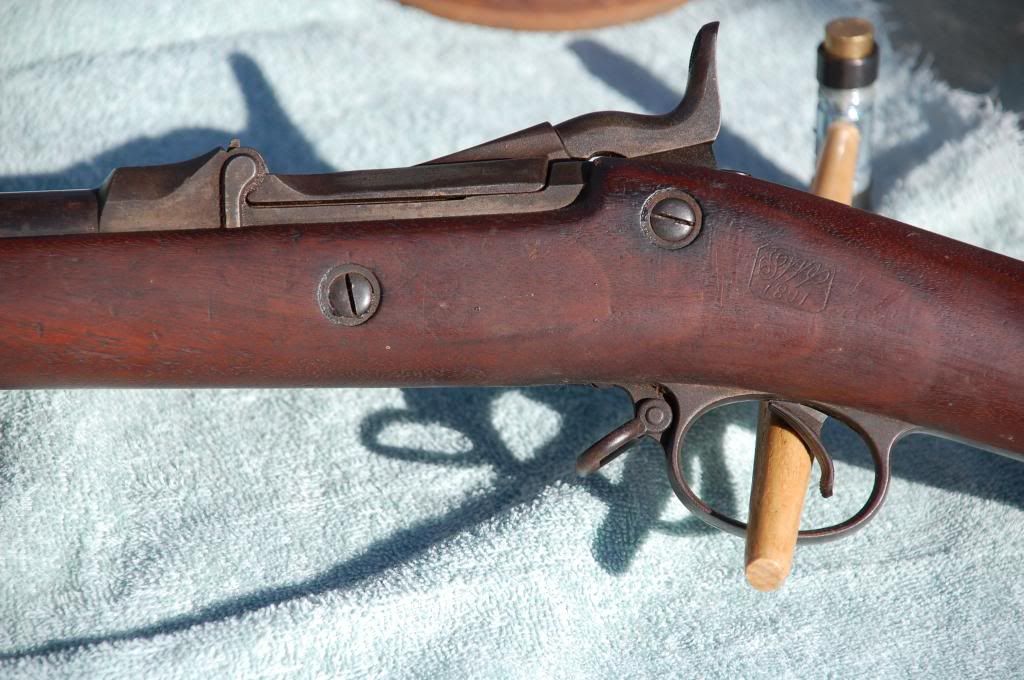 [IMG] 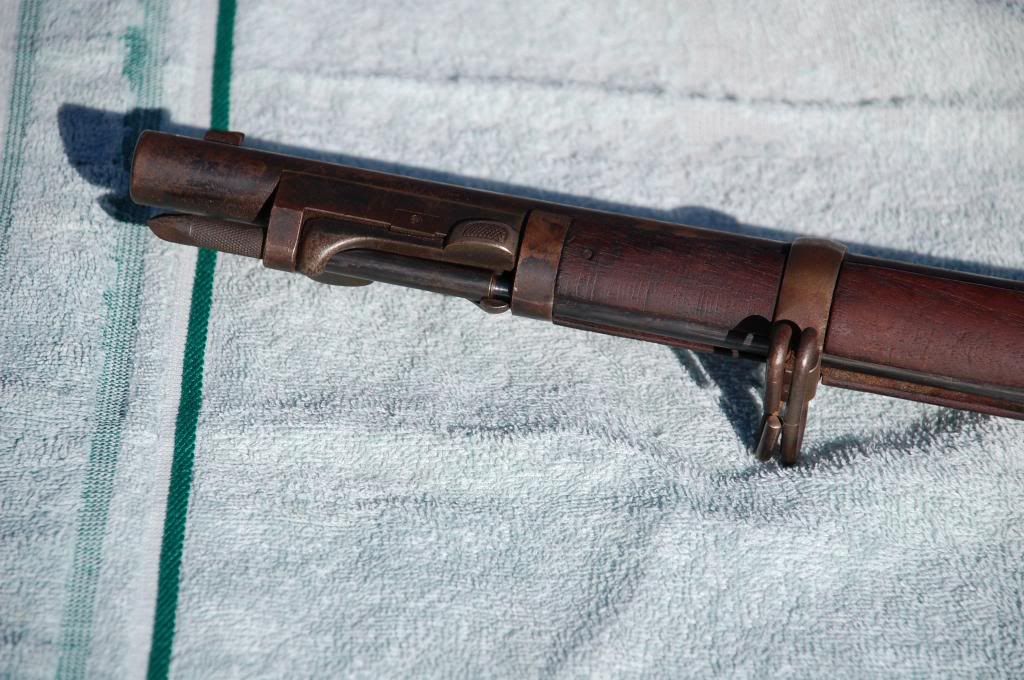 [IMG] 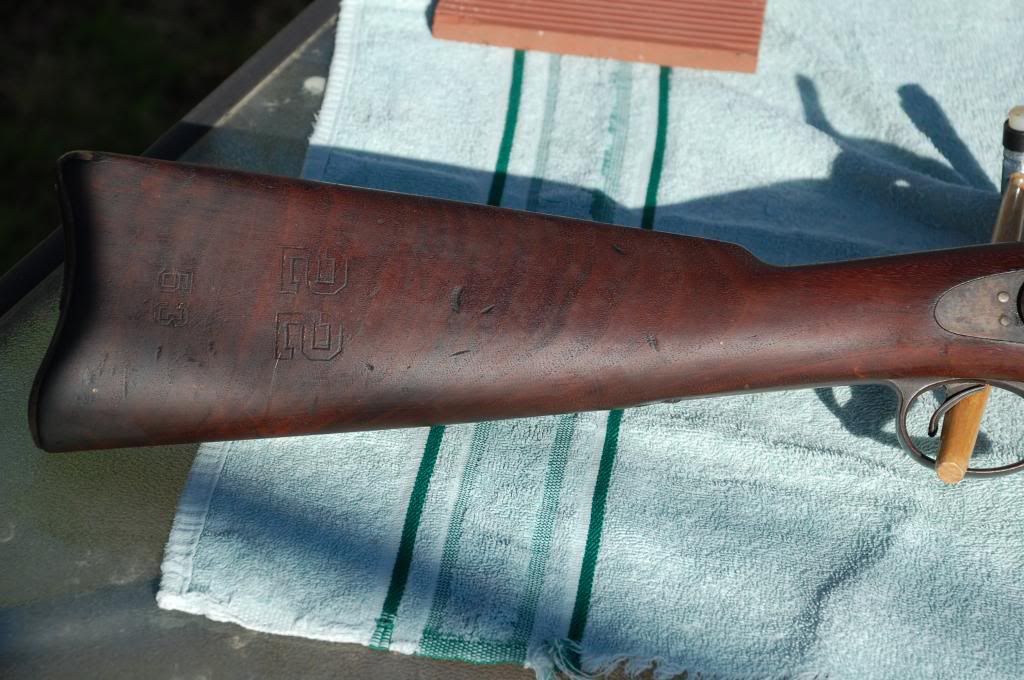
|
|
|
|
|
#2 |
|
Senior Member
Join Date: September 19, 2008
Posts: 4,678
|
.
WOW !  I'n certainly no Trapdoor expert, but that rifle looks like it's in wonderful original condition ! I'n certainly no Trapdoor expert, but that rifle looks like it's in wonderful original condition !I'd be VERY careful about how I cleaned it - if at all ! If you wanted to make a profit, I'm pretty certain a real collector wouldn't want it touched, at all. I would suggest as a first step after a careful disassemble, a bath/soak, then a swirl & wash (with a toothbrush) in clean kerosene (@ any Hess gas station) - which usually dissolves most crud w/o removing that 150 year old patina. Although Frontier 45 is an excellent rust remover, which ascts on rust, but not on bluing, I would fear that it would also act on that (to be cherished) patina - and instead just use either Renaissance Wax or Howard's Feed 'N Wax, following the bottle directions, on both wood & metal parts as Step 2, and be satisified with the result. . |
|
|
|
|
#3 |
|
Member In Memoriam
Join Date: March 17, 1999
Posts: 24,383
|
It is a Model 1888 rod-bayonet rifle, made in 1891. SWP is Samuel W. Porter, the (civilian) Master Armorer at Springfield.
The numbers stamped into the stock were applied after the rifle left U.S. service; they might have been put on by some state or local organization or some military academy. The last picture shows a rather odd shape to the buttstock, as if it had been sanded down to meet a non-standard butt plate. The rod bayonet was adopted as a way to lighten the soldier's load, eliminating the bayonet scabbard and combining the bayonet and cleaning rod; it worked well enough (though seldom used in the Indian Wars) when it was of a size to fit the .45 bore. It was not a success when the same idea was applied to the original Model 1903 rifle, which had a smaller .30 bore and so a much thinner rod bayonet. Jim |
|
|
|
|
#4 |
|
Senior Member
Join Date: July 21, 2011
Location: Idaho
Posts: 7,839
|
if you can't get it off with hot soapy water, a toothbrush and bore butter then it's not grime...
at least that's where I draw the line. magic erasers are way too abrasive as far as I'm concerned
__________________
ignore my complete lack of capitalization. I still have no problem correcting your grammar. I never said half the stuff people said I did-Albert Einstein You can't believe everything you read on the internet-Benjamin Franklin |
|
|
|
|
#5 |
|
Member
Join Date: January 17, 2011
Location: Central Illinois
Posts: 79
|
James the stock hasn't been sanded, I think that is a shadow of my melon head. The buttplate with the door in it is flush with the stock. The reason I said 1884 is because that is the date on the breech block. The cartouche is dated 1891 as you said. Does that mean the breechblock has been replaced?
This is my second antique military gun, which I got with the intention of shooting. My last one was a Burnside carbine and I was in the process of getting brass to work up some loads but was convinced by a collector it was too nice to do anything but look at it. He now owns it. 
|
|
|
|
|
#6 |
|
Senior Member
Join Date: July 21, 2011
Location: Idaho
Posts: 7,839
|
I know almost nothing about anything mady prior to 1900 but as I understand it the 1888 trap door was made by converting muzzle loaders already in service. the breech block would be original to the rifle as it was converted in 1891...
then again I might as well tell you that it was made in belgium and shoots celery sticks.
__________________
ignore my complete lack of capitalization. I still have no problem correcting your grammar. I never said half the stuff people said I did-Albert Einstein You can't believe everything you read on the internet-Benjamin Franklin |
|
|
|
|
#7 |
|
Member In Memoriam
Join Date: March 17, 1999
Posts: 24,383
|
No model 1873 or later was converted from a muzzle loader. The Model 1865 (.58 rimfire) was almost all rifle musket, with the addition of the breechblock to the existing barrel. The Model 1866, in .50-70 CF was also a conversion, with the barrel sleeved to .50, and a screwed on breechblock base. The Model 1868 still used many musket parts, but had a new receiver into which the barrel screwed, and most barrels were new. It was also in .50-70. The Model 1870 was slightly improved, but still in .50-70 caliber. It used musket locks and altered hammers.
The Model 1873, in .45 caliber celery sticks, was totally new, using no rifle musket parts. Jim |
|
|
|
|
#8 |
|
Senior Member
Join Date: April 30, 2002
Location: The Republic of Texas
Posts: 392
|
.
What, you are not going to spray it with oven cleaner ?  I would do nothing other than a soft tooth brush, a little soapy water, and then immediately wipe dry and oil the gun. And yes, that is patina. A lovely one at that. Very nice rifle ! . |
|
|
|
|
#9 |
|
Member In Memoriam
Join Date: March 17, 1999
Posts: 24,383
|
Almost all Model 1888 rifles had breechblocks marked 1884. The only breechblocks marked 1888 were for the 100 experimental positive cam rifles, which were so marked to distinguish them from the regular breech blocks, because they were not interchangeable.
Jim |
|
|
 |
| Thread Tools | Search this Thread |
|
|